Fashion exhibitions have proven to be blockbuster hits for museums the world over. This is largely thanks to the annual summer show held by the Costume Institute at the Metropolitan Museum of Art in New York—and the media frenzy surrounding the gala that precedes it. The yearly event has ignited widespread public interest in blue-chip designer clothing and lifestyle products, which, until relatively recently, were viewed as elitist and unattainable for many. Naturally, luxury brands have taken note of this newfound sense of accessibility and created their own exhibitions to spellbind global consumers even more.
Much of what captivates audiences at these shows comes down to dazzling scenography—an art mastered by Shohei Shigematsu, partner at OMA and director of OMA New York, who designed the Met’s “Manus x Machina: Fashion in an Age of Technology” in 2016. Since then, the Japanese architect has collaborated with several houses on elaborate environments that present apparel and accessories, trace institutional histories, and build narrative identities. “Fashion always has a kind of familiarity, but also a certain distance from the normal world,” Shigematsu observes. “By using the space, the garments, and the content of the exhibition itself, we can create an immersive experience and tell the story of the brand.”
Experience Immersive Environments in ‘Louis Vuitton: Visionary Journeys’
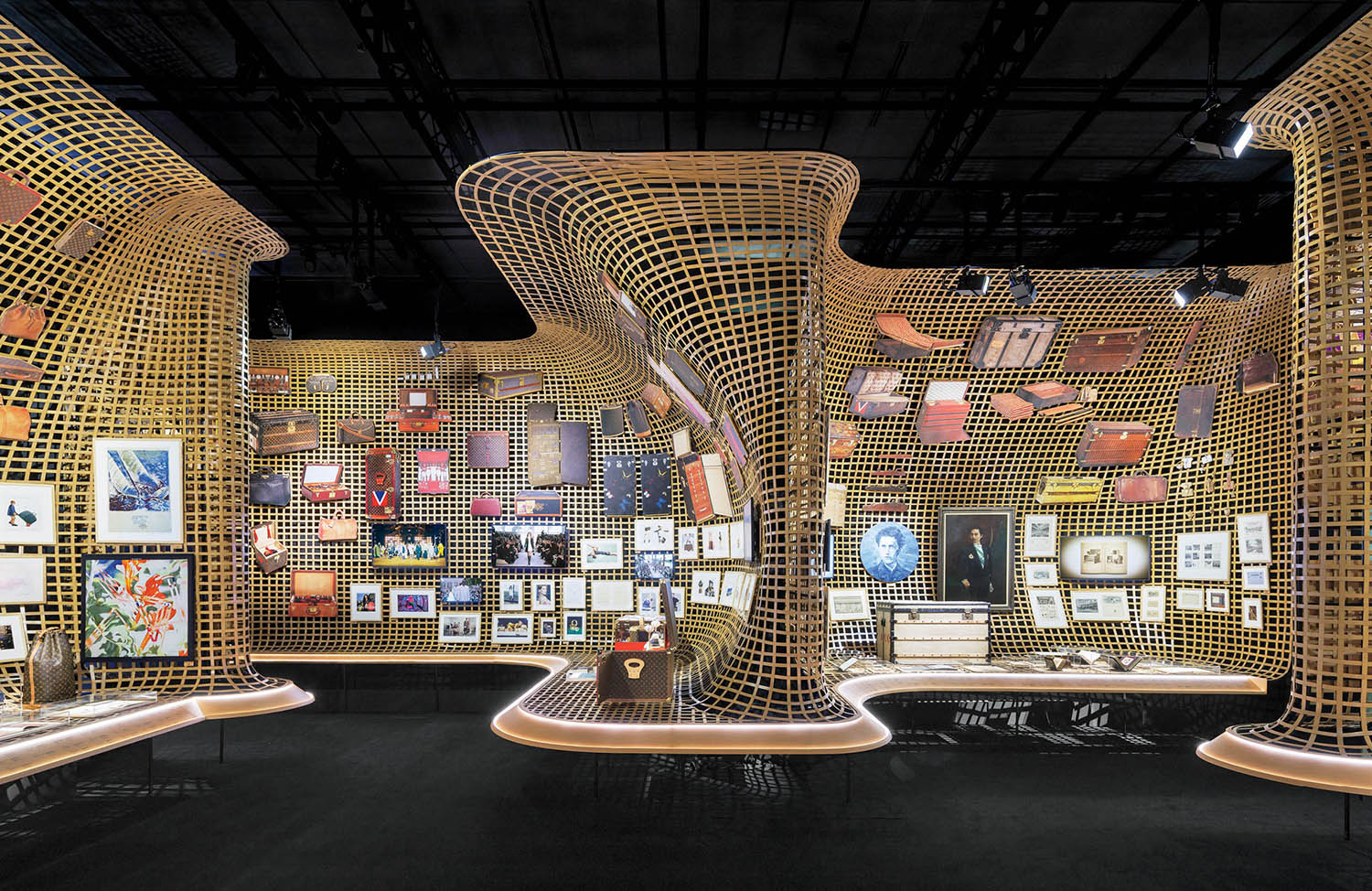 Handwoven bamboo walls encased “Origins,” one of 12 named environments comprising “Louis Vuitton: Visionary Journeys,” a summer exhibition at the Nakanoshima Museum of Art in Osaka, Japan, by OMA New York that observed the luxury goods and apparel company’s 170th anniversary.
Handwoven bamboo walls encased “Origins,” one of 12 named environments comprising “Louis Vuitton: Visionary Journeys,” a summer exhibition at the Nakanoshima Museum of Art in Osaka, Japan, by OMA New York that observed the luxury goods and apparel company’s 170th anniversary.
The architect’s latest exhibition, “Louis Vuitton: Visionary Journeys,” at the Nakanoshima Museum of Art in Osaka, Japan, last July through September, marked the 170th anniversary of the luxury goods and apparel company’s founding while continuing a partnership with the house that began in 2023 and includes a previous exhibition in Bangkok. Initially, Shigematsu used the dimensions of Vuitton’s signature trunk to create a bricklike module that can be stacked, tessellated, or assembled into sculptural forms. “The brand’s identity, innovation, and history are all crystallized in this single object,” he explains. Rendered in monogrammed washi paper over a wood frame and lit from within, the modules formed eight dramatically elongated lanterns suspended in the five-story atrium of Katsuhiko Endo’s building, welcoming museumgoers. Real trunks, however, appeared at the entrance to the exhibition galleries, where 138 of them formed a geodesic dome—a nod to the hemispheres long used at world fairs as symbols of the future, and a gesture echoed by OMA in the French pavilion at the concurrent Expo 2025 Osaka.
After passing beneath the dome, guests embarked on the titular journey: a winding sequence of 11 galleries—architecturally unique spaces named for themes and places central to Vuitton’s legacy—offering a surprise at every turn. “A lot of people appreciate the non-museumlike experience,” Shigematsu says of the environments, most of which were fabricated and tested near Tokyo before being shipped to the museum for reassembly. The result, he hopes, appealed to both mind and senses: “There was a lot of written text for each object,” he acknowledges, “but each room had an atmosphere that presented the intangible part of architecture, where people could feel the theme or story almost instantly.”
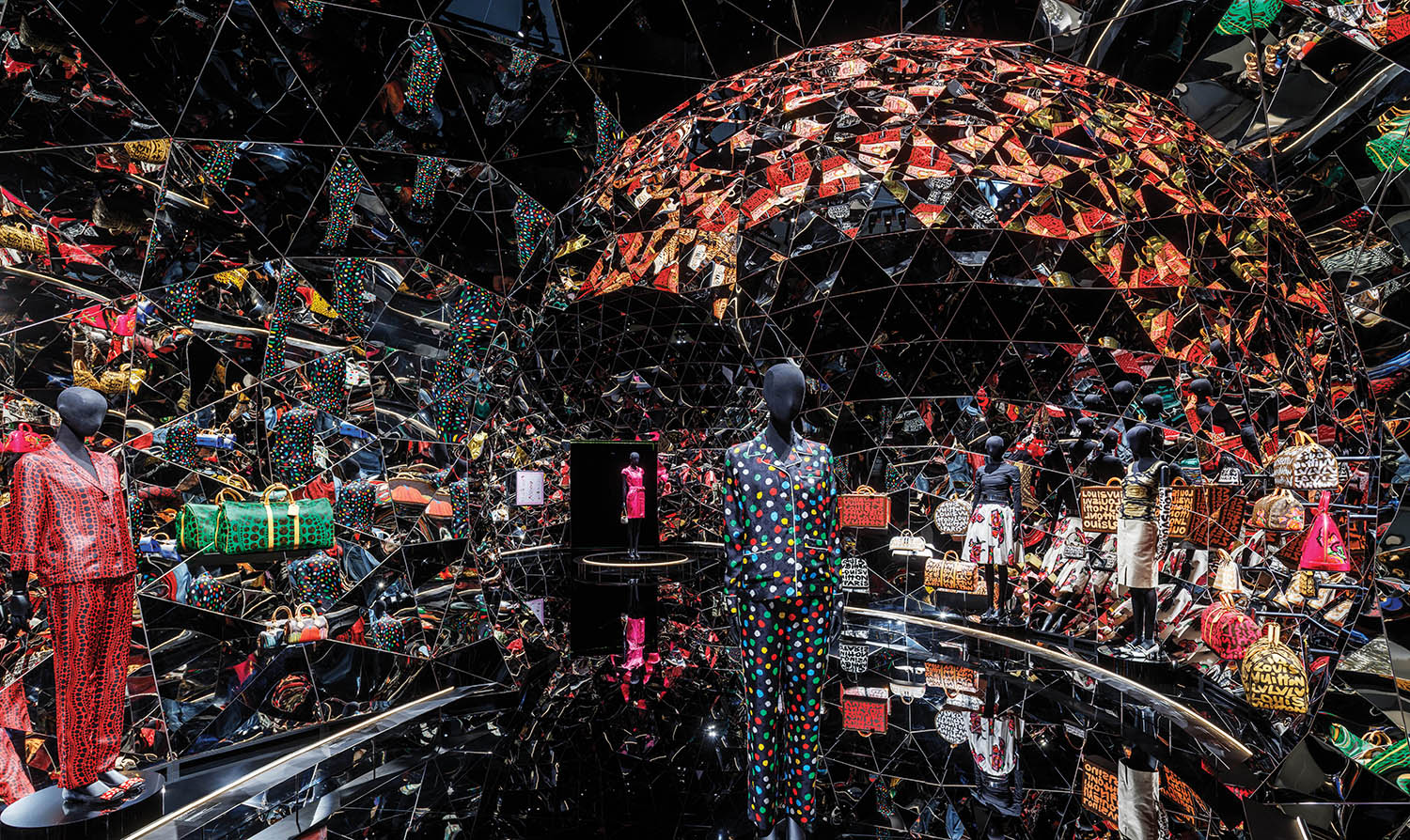 LV collections by Yayoi Kusama, Takashi Murakami, Stephen Sprouse, and Supreme were celebrated in “Collaborations,” a kaleidoscope of four interlocking domes covered with 1,467 mirrored facets.
LV collections by Yayoi Kusama, Takashi Murakami, Stephen Sprouse, and Supreme were celebrated in “Collaborations,” a kaleidoscope of four interlocking domes covered with 1,467 mirrored facets.
The first gallery, a spacious, mint-green antechamber dubbed “Asnières,” featured a faithful replica of an art nouveau stained-glass window from the Vuitton family home, now a museum in the eponymous town, where the artisanal workshop still operates today. The following room, “Origins,” was wrapped in a flowing, basketlike armature of handwoven bamboo, its undulating form defining six deep bays, each brimming with photographs, artifacts, and memorabilia from an era in the company’s history. This represented only a fraction of the 1,000-plus objects that fashion historian Florence Müller curated for the 19,400-square-foot exhibition. About 200 of them related specifically to Japan—a theme subtly suggested by the bamboo latticework but fully explored in a subsequent gallery, “Louis Vuitton and Japan,” where the interplay between the European house and Japanese culture took center stage. A selection of historic and contemporary garments, artworks, and objects was displayed on floating modular platforms that evoked tatami mats, as did the grid of light boxes suspended overhead.
No surprise, then, that two native talents, Yayoi Kusama and Takashi Murakami, were prominent among the design partnerships celebrated in “Collaborations”—a kaleidoscopic space of interlocking domes lined with mirrored facets that reflected both the garment-bedecked mannequins and the visitors who, Shigematsu suggests, “became part of the exhibition,” bringing the journey to a dazzling conclusion.
Nakanoshima Museum of Art Transforms Into A Fashion Wonderland
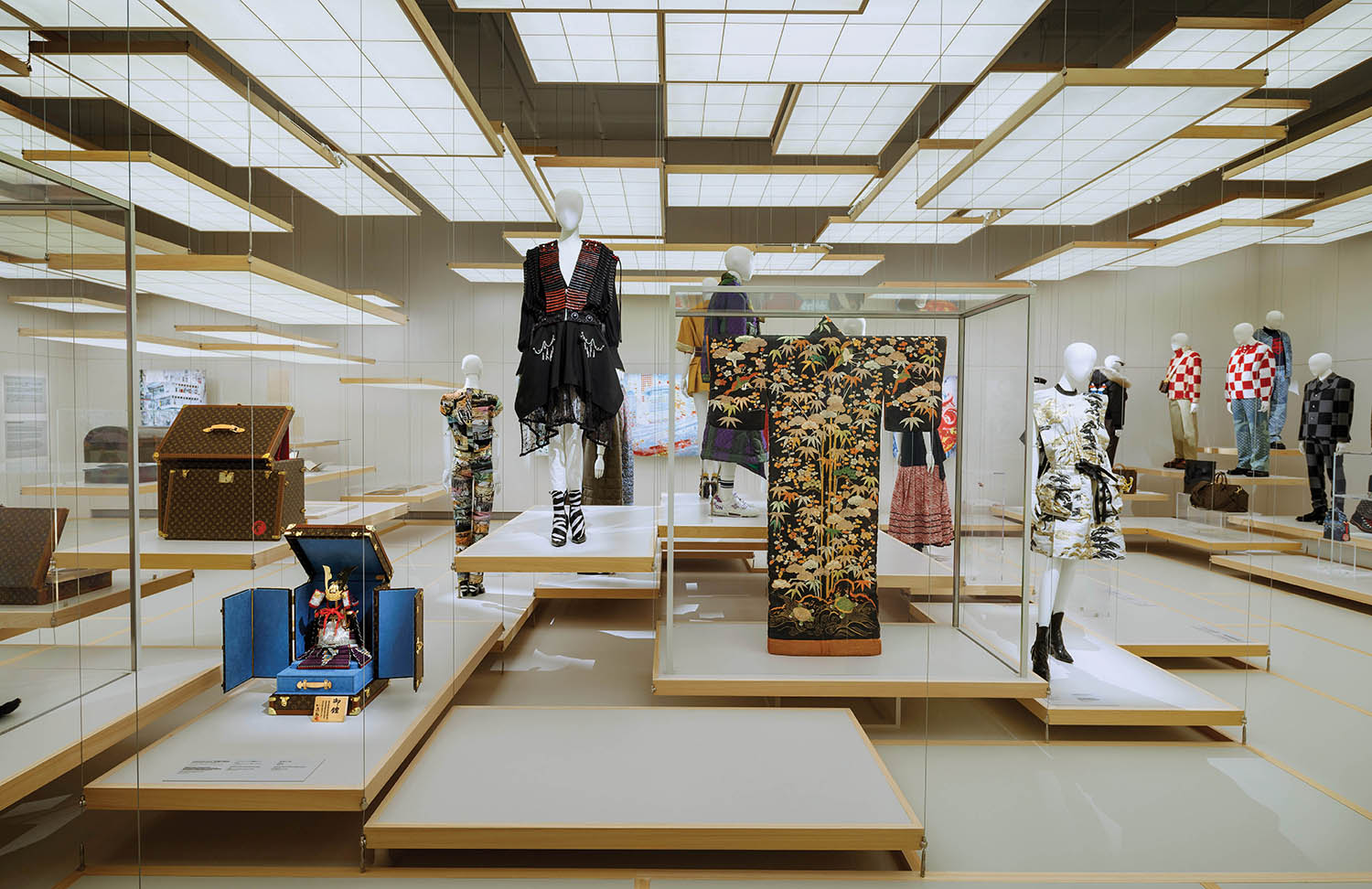 Modular platforms and overhead light boxes recalling traditional tatami mats provided a cross-cultural environment for “Louis Vuitton and Japan,” which explored the interplay between the brand and the nation.
Modular platforms and overhead light boxes recalling traditional tatami mats provided a cross-cultural environment for “Louis Vuitton and Japan,” which explored the interplay between the brand and the nation.
Not that France had been forgotten along the way: “Workshop” reproduced elements from the Asnières atelier where Vuitton trunks are made—green-painted steelwork, a sawtooth roofline, wall-mounted tools—along with hefty solid-beech workbenches where artisans gave live demonstrations of their craft. And “Atelier Rarex” reinterpreted the mansard roof of Maison Vendôme, the company’s Paris flagship, transforming its two tiers of windows into 20 stainless-steel display niches, each containing an haute-couture creation. Mirror-clad end walls expanded the installation, turning it into an infinite Haussmannian roofscape.
By offering immersive (and photogenic) spaces such as these for the public to enjoy, the fashion exhibition shows no sign of waning. Wherever “Visionary Journeys” travels next, it will continue to transport visitors into new worlds of thematic exploration, each tailored to its context.
OMA New York Explores Louis Vuitton’s Unique Creations In This Exhibition
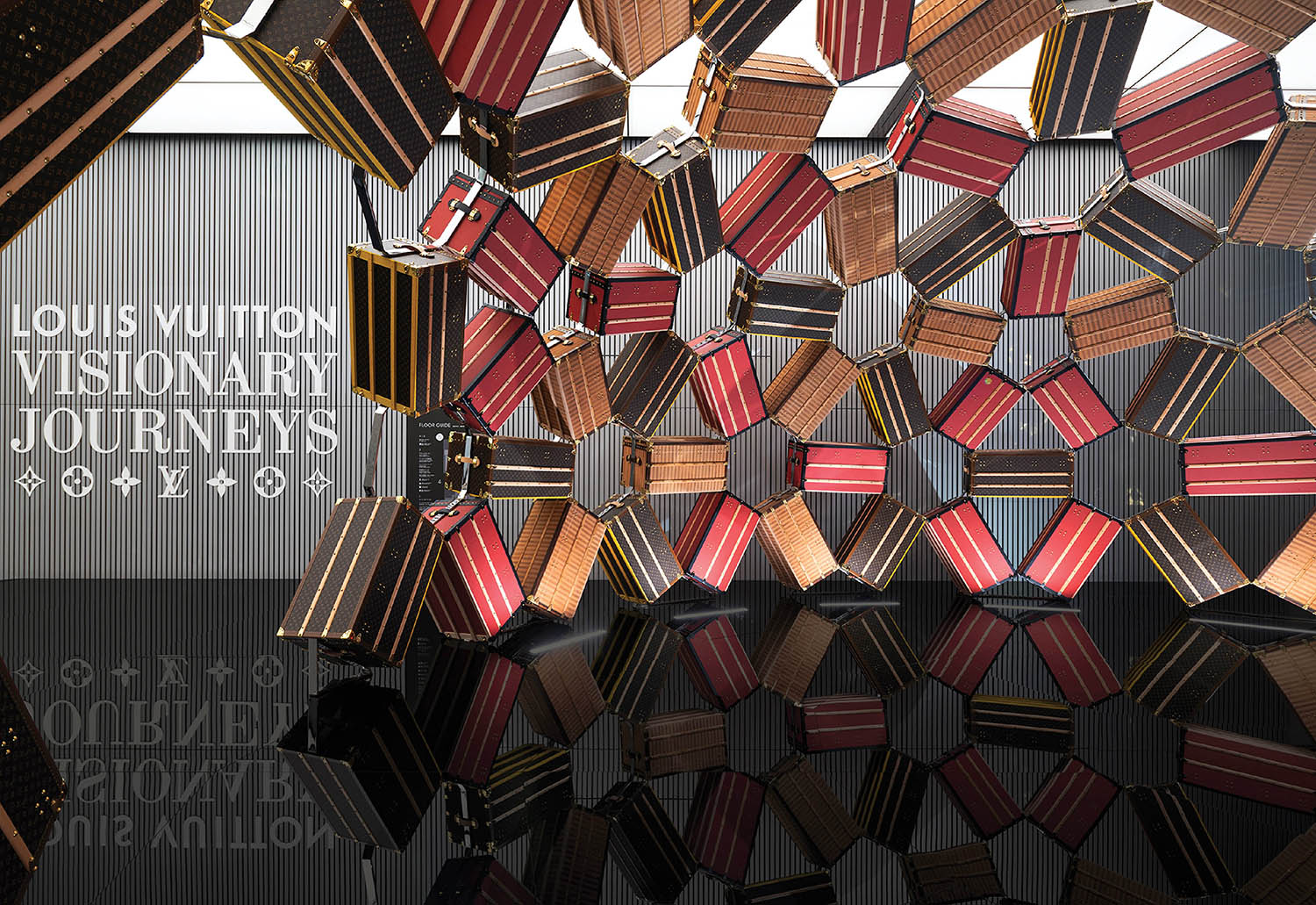 A self-supporting geodesic dome made from 138 trunks marked the exhibition entry.
A self-supporting geodesic dome made from 138 trunks marked the exhibition entry.
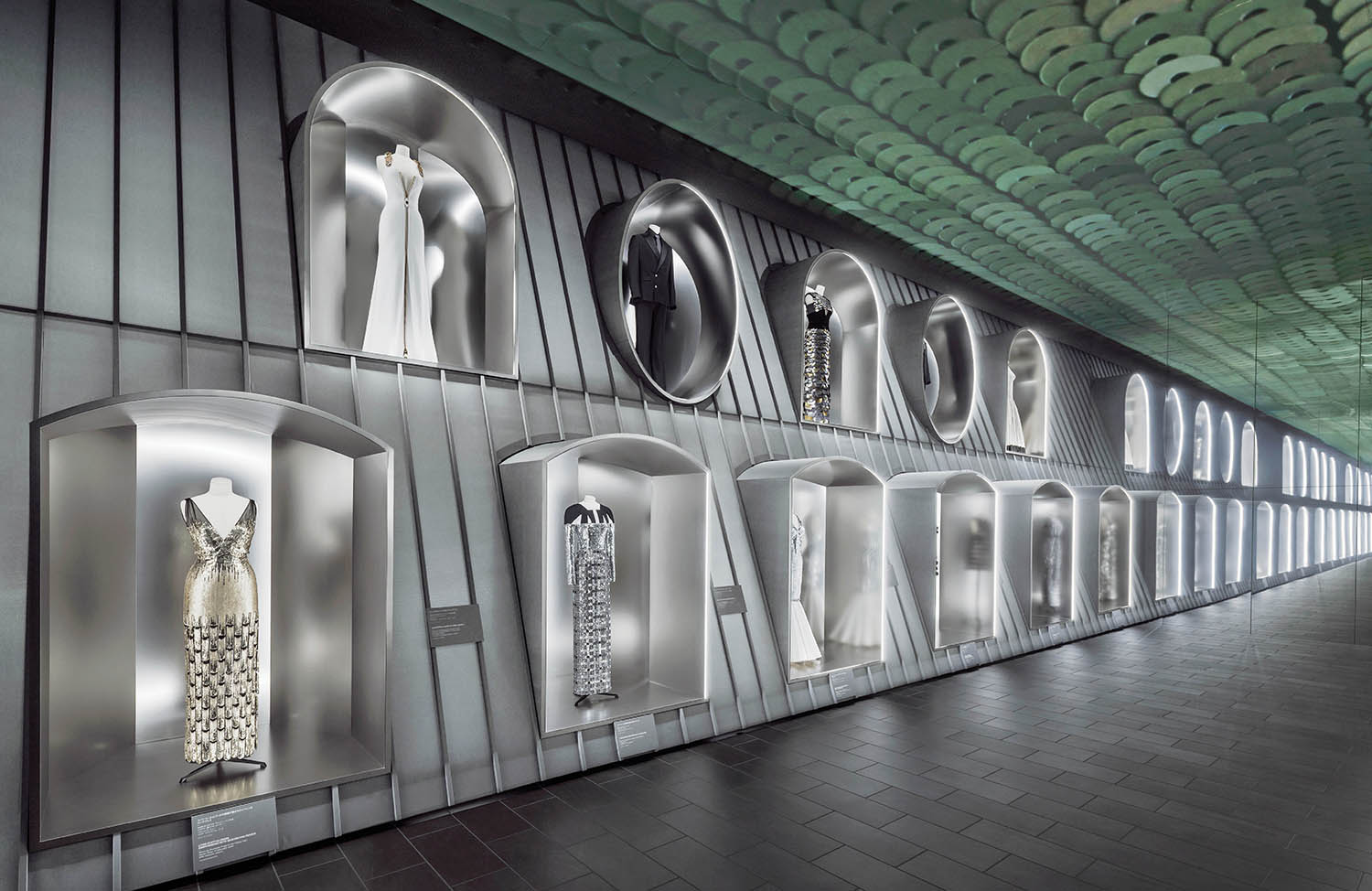 Inspired by the mansard roof of Vuitton’s Paris flagship, “Atelier Rarex” displayed couture garments in windowlike niches.
Inspired by the mansard roof of Vuitton’s Paris flagship, “Atelier Rarex” displayed couture garments in windowlike niches.
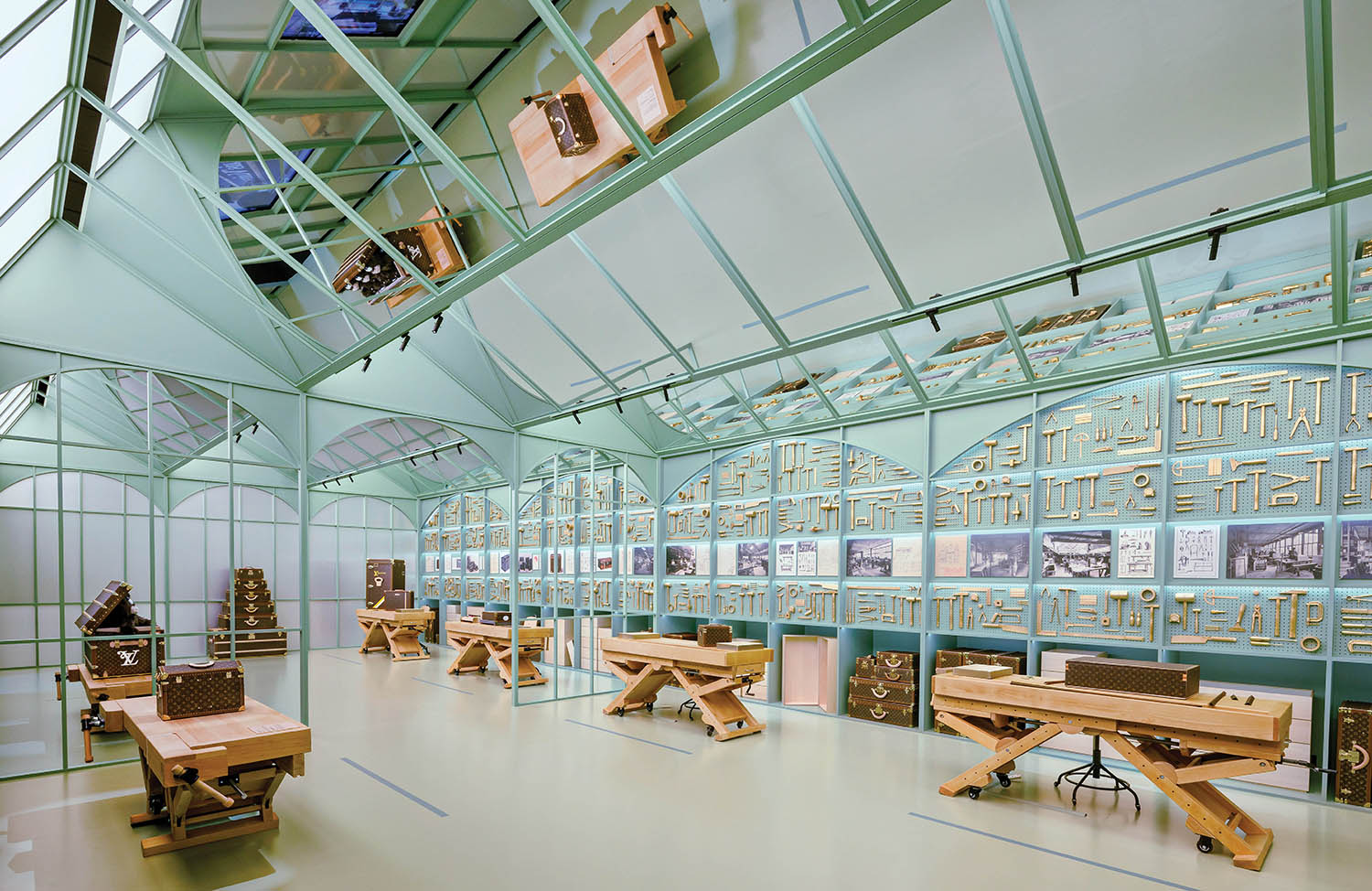 Artisans gave live demonstrations at solid-beech benches in “Workshop,” which recreated elements of the handcraft atelier in Asnières, France.
Artisans gave live demonstrations at solid-beech benches in “Workshop,” which recreated elements of the handcraft atelier in Asnières, France.
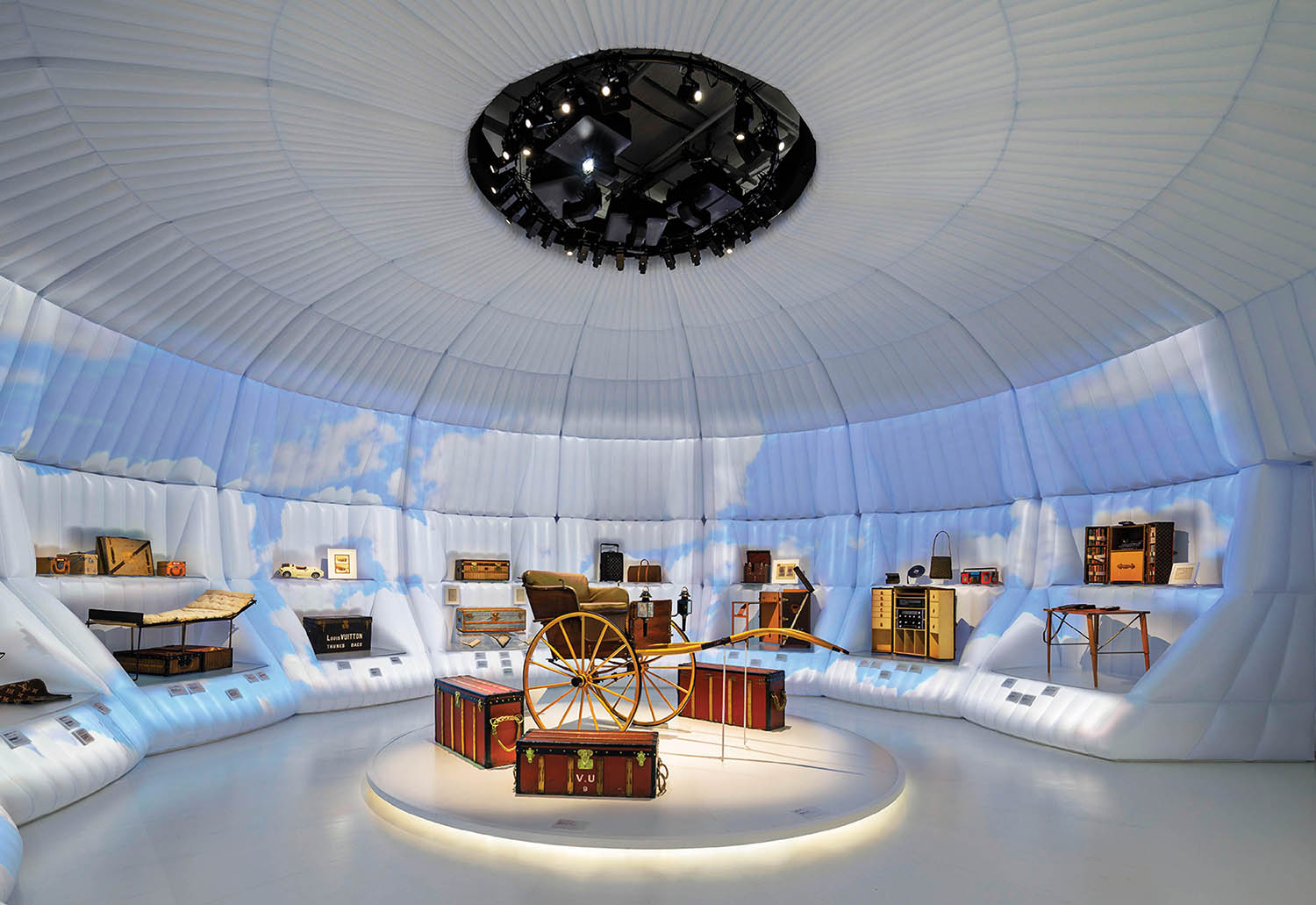 Rugged travel artifacts got an igloolike setting in “Expeditions,” an inflatable dome inspired by hot-air balloons.
Rugged travel artifacts got an igloolike setting in “Expeditions,” an inflatable dome inspired by hot-air balloons.
Dive Into Each Specialized Environment
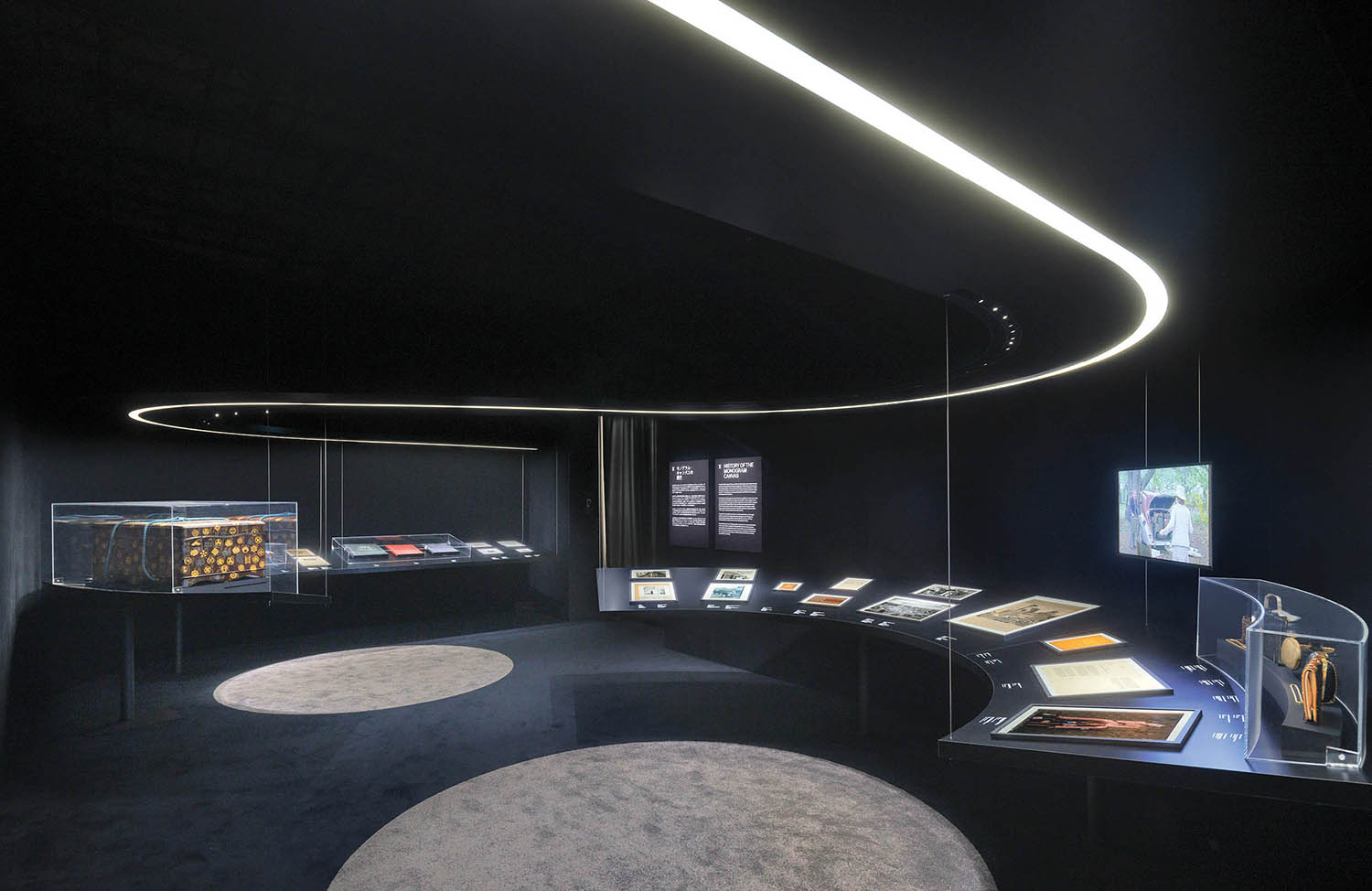 Arrayed on a snaking platform, 40 artifacts formed a timeline that traced the evolution of the famous pattern through many iterations.
Arrayed on a snaking platform, 40 artifacts formed a timeline that traced the evolution of the famous pattern through many iterations.
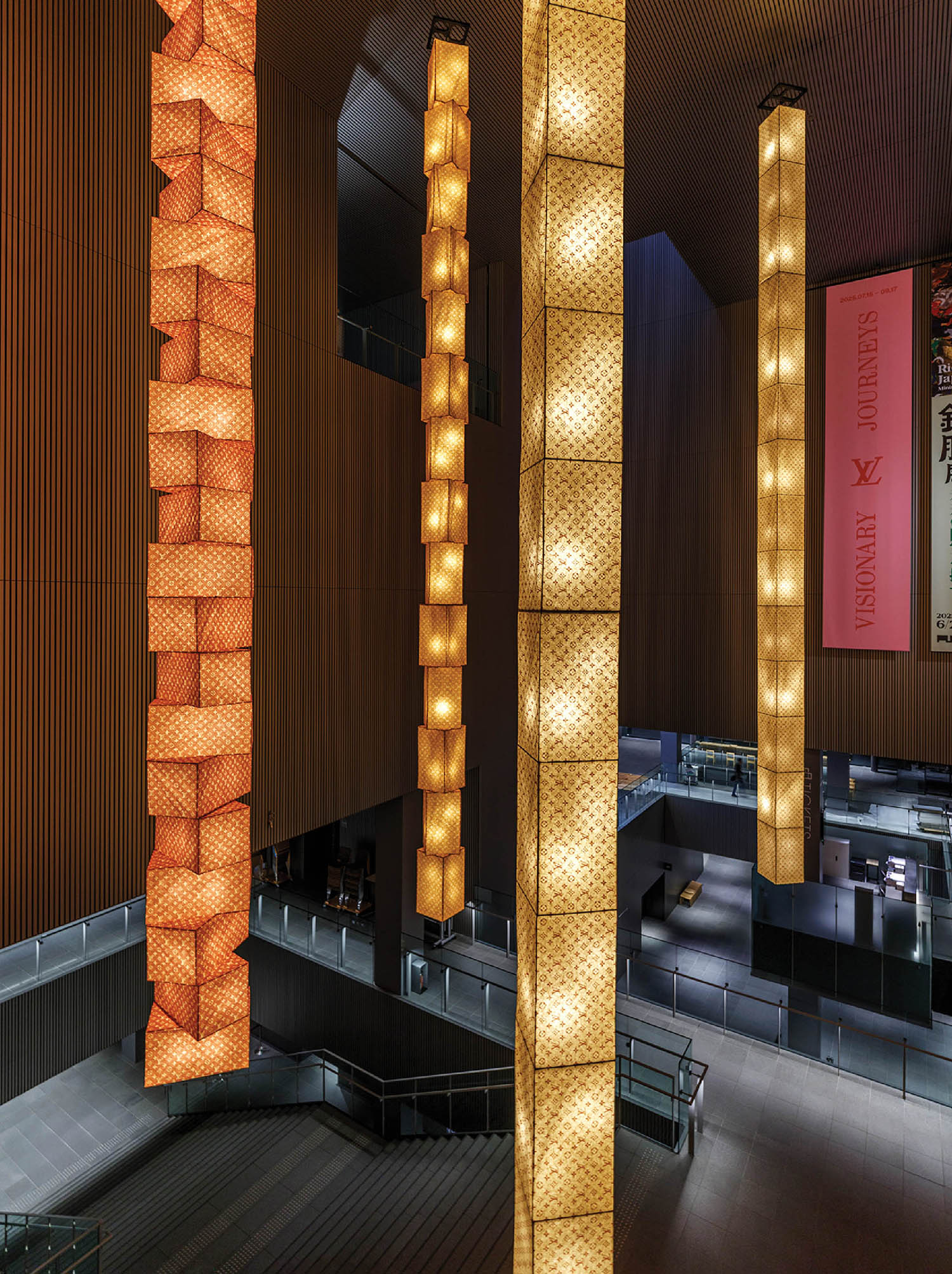 Towering lanterns made of LV-monogrammed washi paper hung in the museum’s five-story atrium.
Towering lanterns made of LV-monogrammed washi paper hung in the museum’s five-story atrium.
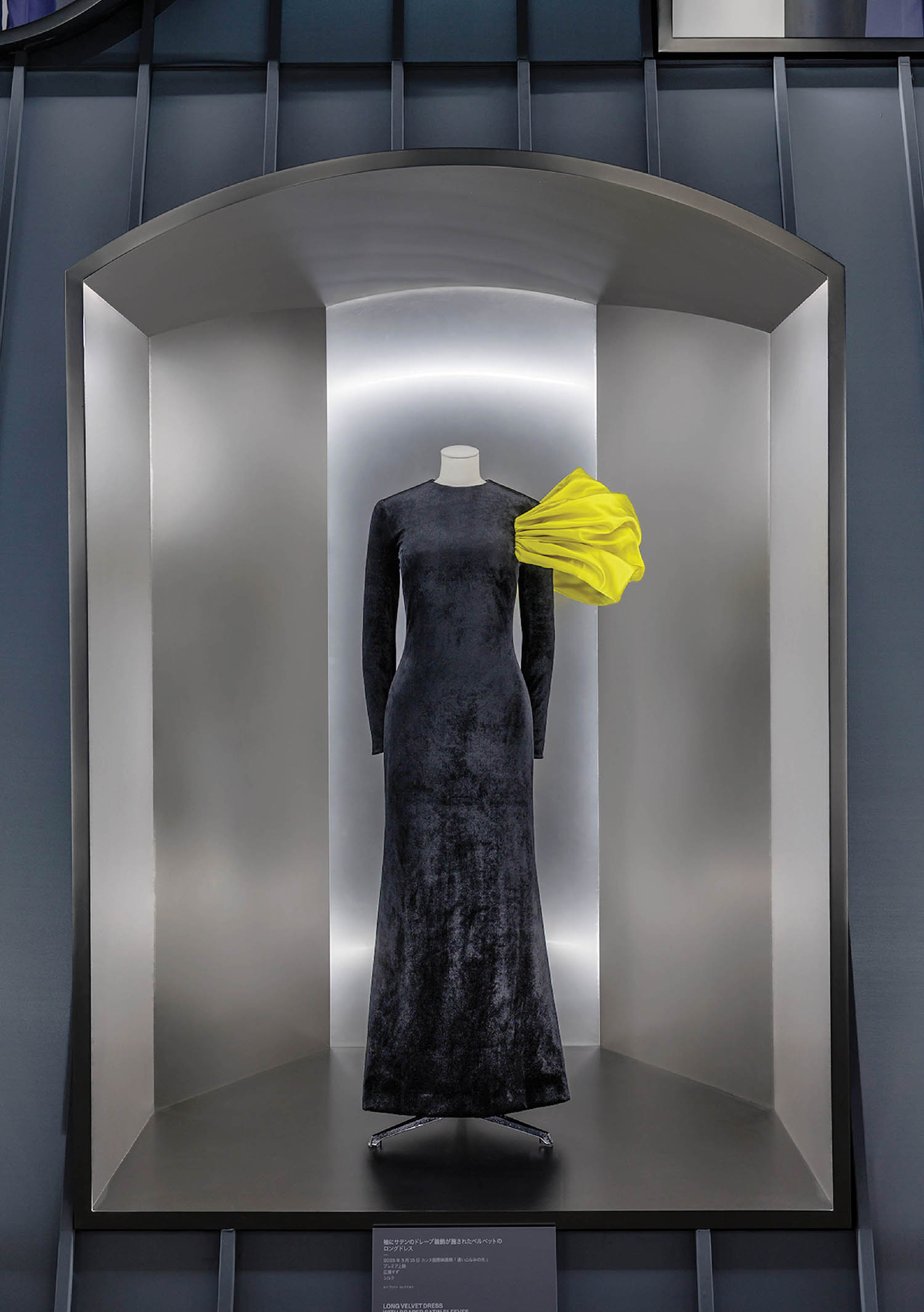 Stainless steel lined the niches.
Stainless steel lined the niches.
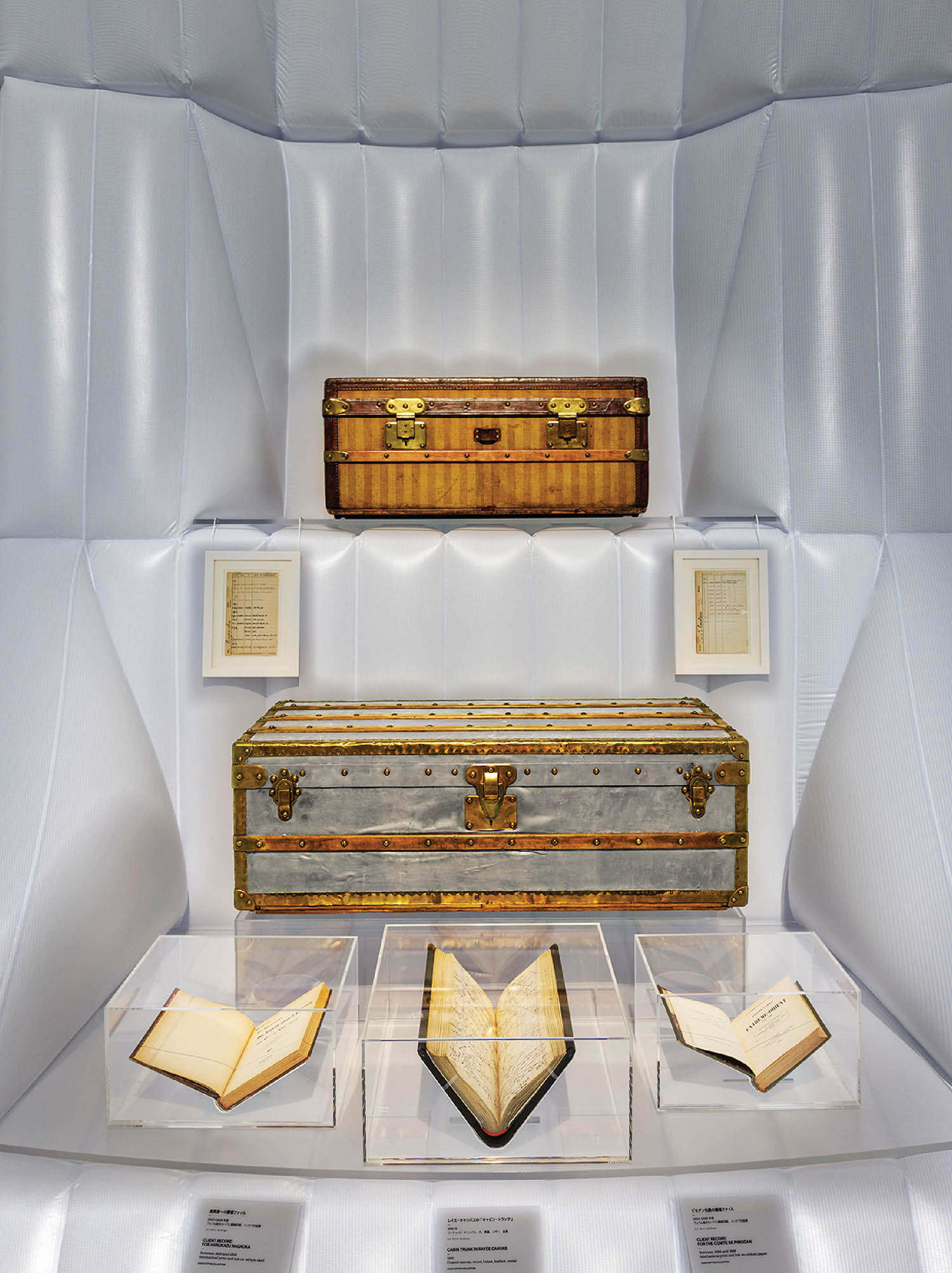 A zinc trunk and historic client records populated one of the dome’s 14 display modules.
A zinc trunk and historic client records populated one of the dome’s 14 display modules.
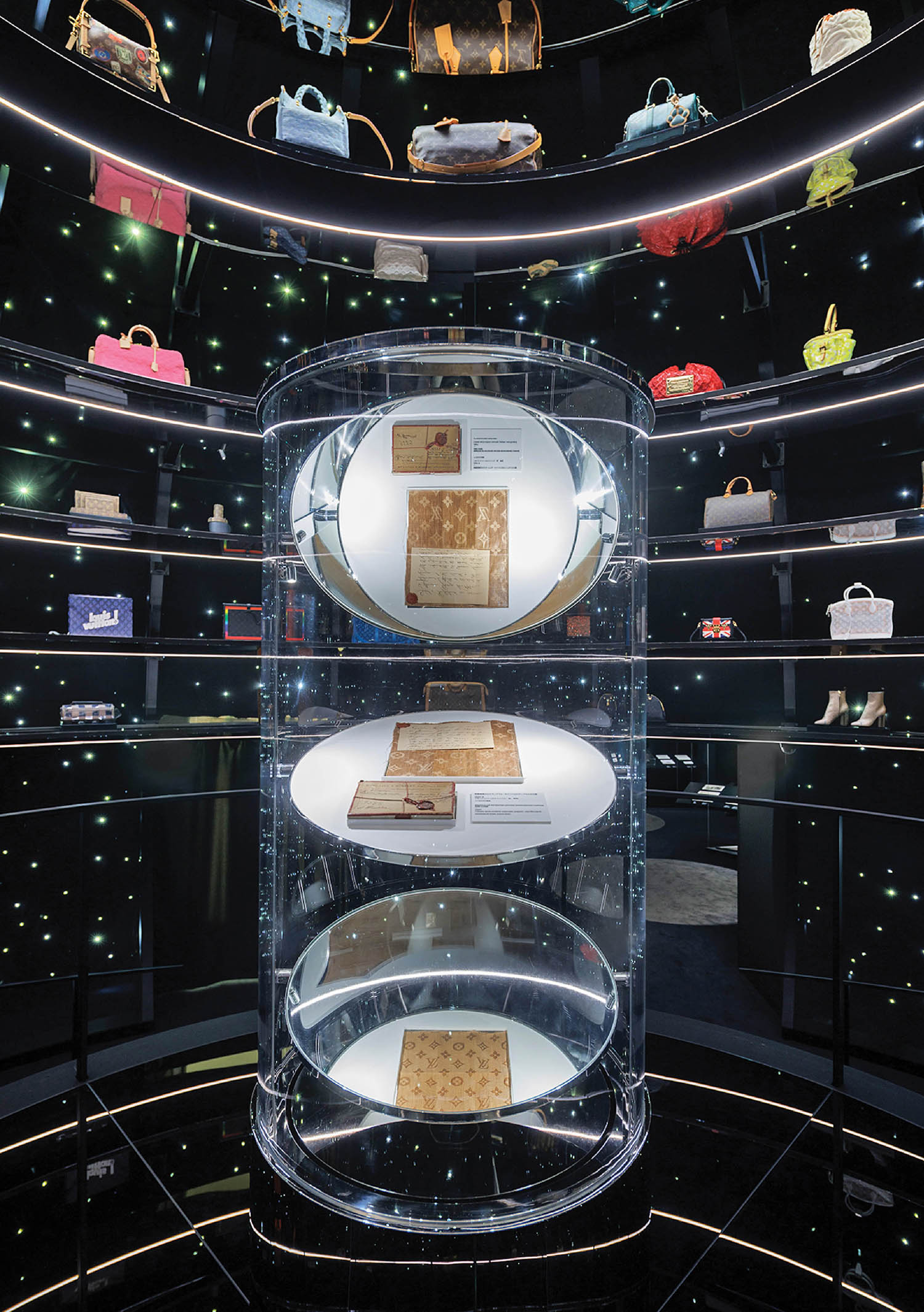 In “Monogram Canvas,” a cylindrical vitrine housed the original 1897 patented swatch for the brand’s signature fabric.
In “Monogram Canvas,” a cylindrical vitrine housed the original 1897 patented swatch for the brand’s signature fabric.
PROJECT TEAM
OMA NEW YORK: JESSE CATALANO; NICCOLO BALDI; XAVIER FOX; BLAKE KEM; FRANCESCA PARMIGGIANI. NPU CORPORATION: EXECUTIVE PRODUCTION. FLORENCE MÜLLER: ART CONSULTANT. SPECIAL OFFER: GRAPHICS CONSULTANT. TOKYO HEART-S: LIGHTING CONSULTANT. TSUMURA KOGEI: GENERAL CONTRACTOR.


AloJapan.com